
loading
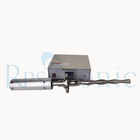

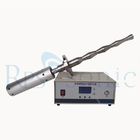

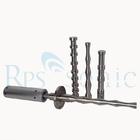

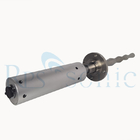

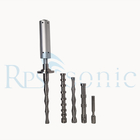

| Availability: | |
|---|---|
| Quantity: | |
| Place of Origin | China |
|---|---|
| Brand Name | Rps-sonic |
| Certification | CE |
| Model Number | RPS-SONO20-3000 |
| Minimum Order Quantity | 1pcs |
| Price | negotiable |
| Packaging Details | CARTON |
| Delivery Time | 1DAYS |
| Payment Terms | T/T |
| Supply Ability | 200PCS/MONTH |
20Khz 3000w Ultrasonic Almond Milk Treatment ultrasonic homogenizer
Parameter
| Model | SONO20-1000 | SONO20-2000 | SONO15-3000 | SONO20-3000 |
| Frequency | 20±0.5 KHz | 20±0.5 KHz | 15±0.5 KHz | 20±0.5 KHz |
| Power | 1000 W | 2000 W | 3000 W | 3000 W |
| Voltage | 220/110V | 220/110V | 220/110V | 220/110V |
| Temperature | 300 ℃ | 300 ℃ | 300 ℃ | 300 ℃ |
| Pressure | 35 MPa | 35 MPa | 35 MPa | 35 MPa |
| Intensity of sound | 20 W/cm² | 40 W/cm² | 60 W/cm² | 60 W/cm² |
| Max Capacity | 10 L/Min | 15 L/Min | 20 L/Min | 20 L/Min |
Description
The purpose of using ultrasonic homogenization equipment is to reduce the number of small particles in the liquid to improve the uniformity and stability of the liquid. These particles (dispersed phase) can be solid or liquid, and decreasing the average diameter of the particles increases the number of individual particles resulting in a decrease in the distance between the particles and an increase in the surface area. The surface area and average particle spacing of particles can affect the rheology of a liquid. If there are differences in the specific gravity of the particles in the liquid, the homogeneity of the mixture will affect the stability of the dispersion. If most of the particles are similar in size, the tendency to agglomerate during settling or ascent is reduced because similar particles have similar ascent or settling velocities.
Pressure homogenizer
The most common homogenization mechanism is high pressure homogenization. There, the liquid passes through the homogenizing valve at high speed under high pressure. When passing through the homogenizing valve, the liquid will experience a short cycle of high and low pressure.
This mechanism works only for soft fine particles, such as (fat globules in milk), but when used to disperse hard and abrasive materials (such as pigments, polishing media or metal oxides) or fibrous and ordered material (such as mud, algae or sludge). Because high-pressure homogenization uses valves with small holes, when abrasive materials pass through the pump and valve [ ] holes at high speed, it will cause wear and reduce the efficiency and service life of the pump and valve.
Advantages of Ultrasonic Homogenization
Ultrasonic homogenization is a method to reduce the density of soft and hard particles, and homogenization is based on cavitation. When the liquid is exposed to strong ultrasonic vibrations, the sound waves will propagate in the liquid and cause alternating high and low pressure cycles (about 20,000 times/second). During the low-pressure cycle, as the vapor pressure of the liquid increases, high-intensity small vacuum bubbles are generated in the liquid. When the bubbles reach a certain size; they will collapse violently during the high pressure cycle. In this implosion process, local high pressure produces a high-speed liquid jet. The resulting electrical currents and turbulence disrupt particle agglomeration and induce violent collisions between individual particles.
One of the main advantages of ultrasonic homogenization equipment is that there are relatively few parts in contact with the liquid, which effectively reduces friction and wear and cleaning time. There are only two parts in contact with the liquid: the ultrasonic vibrating head and the tank. Both are simple geometries, and neither has hidden holes. Ultrasonic amplitude and pressure are the most influential parameters on the effect of cavitation. The amplitude of Hangchao ultrasonic homogenization equipment is about 1 to 200 microns, and it can withstand the pressure range of liquid from 0 to 500 psig. Due to the wide adjustment range of the two parameters, very good cavitation effects can be achieved.
By precisely controlling the amplitude of the ultrasonic emitting head, the amplitude of the ultrasonic equipment used in production at different scales is constant, which makes the ultrasonic wave controllable and repeatable. Under the same operating parameters, will produce consistent and reproducible results. This is important for the quality of production materials and scaling up of process results from laboratory to production level.
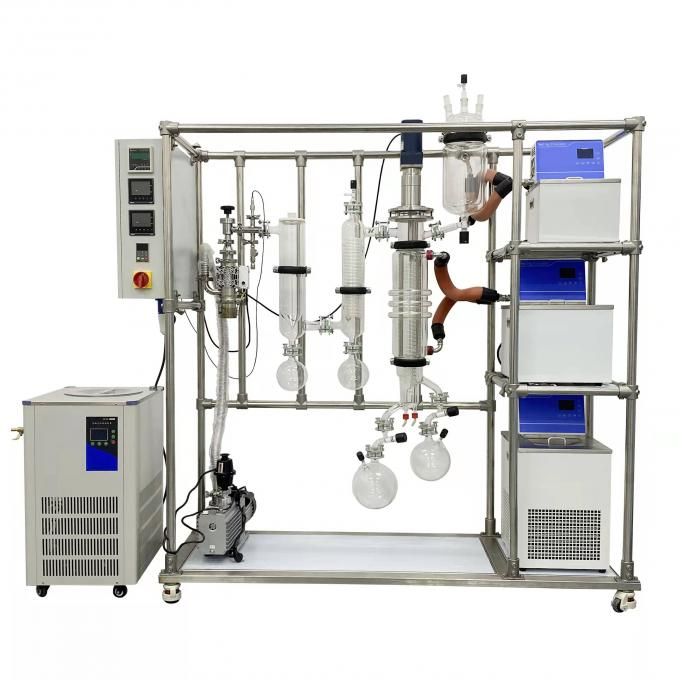
20Khz 3000w Ultrasonic Almond Milk Treatment ultrasonic homogenizer
Parameter
| Model | SONO20-1000 | SONO20-2000 | SONO15-3000 | SONO20-3000 |
| Frequency | 20±0.5 KHz | 20±0.5 KHz | 15±0.5 KHz | 20±0.5 KHz |
| Power | 1000 W | 2000 W | 3000 W | 3000 W |
| Voltage | 220/110V | 220/110V | 220/110V | 220/110V |
| Temperature | 300 ℃ | 300 ℃ | 300 ℃ | 300 ℃ |
| Pressure | 35 MPa | 35 MPa | 35 MPa | 35 MPa |
| Intensity of sound | 20 W/cm² | 40 W/cm² | 60 W/cm² | 60 W/cm² |
| Max Capacity | 10 L/Min | 15 L/Min | 20 L/Min | 20 L/Min |
Description
The purpose of using ultrasonic homogenization equipment is to reduce the number of small particles in the liquid to improve the uniformity and stability of the liquid. These particles (dispersed phase) can be solid or liquid, and decreasing the average diameter of the particles increases the number of individual particles resulting in a decrease in the distance between the particles and an increase in the surface area. The surface area and average particle spacing of particles can affect the rheology of a liquid. If there are differences in the specific gravity of the particles in the liquid, the homogeneity of the mixture will affect the stability of the dispersion. If most of the particles are similar in size, the tendency to agglomerate during settling or ascent is reduced because similar particles have similar ascent or settling velocities.
Pressure homogenizer
The most common homogenization mechanism is high pressure homogenization. There, the liquid passes through the homogenizing valve at high speed under high pressure. When passing through the homogenizing valve, the liquid will experience a short cycle of high and low pressure.
This mechanism works only for soft fine particles, such as (fat globules in milk), but when used to disperse hard and abrasive materials (such as pigments, polishing media or metal oxides) or fibrous and ordered material (such as mud, algae or sludge). Because high-pressure homogenization uses valves with small holes, when abrasive materials pass through the pump and valve [ ] holes at high speed, it will cause wear and reduce the efficiency and service life of the pump and valve.
Advantages of Ultrasonic Homogenization
Ultrasonic homogenization is a method to reduce the density of soft and hard particles, and homogenization is based on cavitation. When the liquid is exposed to strong ultrasonic vibrations, the sound waves will propagate in the liquid and cause alternating high and low pressure cycles (about 20,000 times/second). During the low-pressure cycle, as the vapor pressure of the liquid increases, high-intensity small vacuum bubbles are generated in the liquid. When the bubbles reach a certain size; they will collapse violently during the high pressure cycle. In this implosion process, local high pressure produces a high-speed liquid jet. The resulting electrical currents and turbulence disrupt particle agglomeration and induce violent collisions between individual particles.
One of the main advantages of ultrasonic homogenization equipment is that there are relatively few parts in contact with the liquid, which effectively reduces friction and wear and cleaning time. There are only two parts in contact with the liquid: the ultrasonic vibrating head and the tank. Both are simple geometries, and neither has hidden holes. Ultrasonic amplitude and pressure are the most influential parameters on the effect of cavitation. The amplitude of Hangchao ultrasonic homogenization equipment is about 1 to 200 microns, and it can withstand the pressure range of liquid from 0 to 500 psig. Due to the wide adjustment range of the two parameters, very good cavitation effects can be achieved.
By precisely controlling the amplitude of the ultrasonic emitting head, the amplitude of the ultrasonic equipment used in production at different scales is constant, which makes the ultrasonic wave controllable and repeatable. Under the same operating parameters, will produce consistent and reproducible results. This is important for the quality of production materials and scaling up of process results from laboratory to production level.









Ultrasonic Welding Equipment Ultrasonic Welding Transducer Ultrasonic Welding Converter Ultrasonic Liquid Processor Ultrasonic Cutting Equipment Ultrasonic Spray Nozzles Ultrasonic Power Supply Ultrasonic Soldering Equipment Ultrasonic Welding Horn Ultrasonic Assisted Machining Ultrasonic Testing Equipment
content is empty!